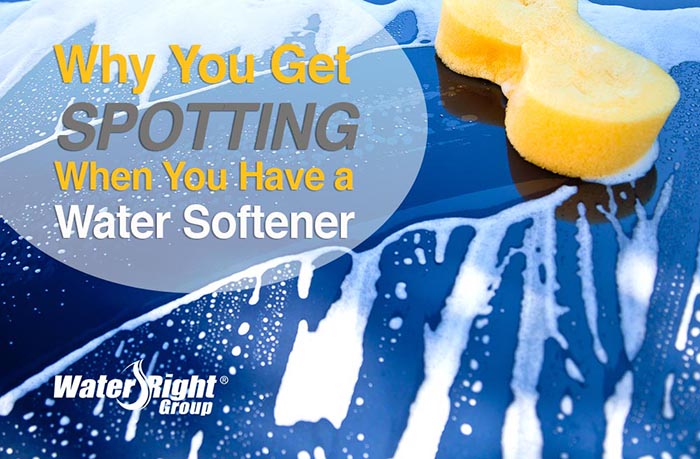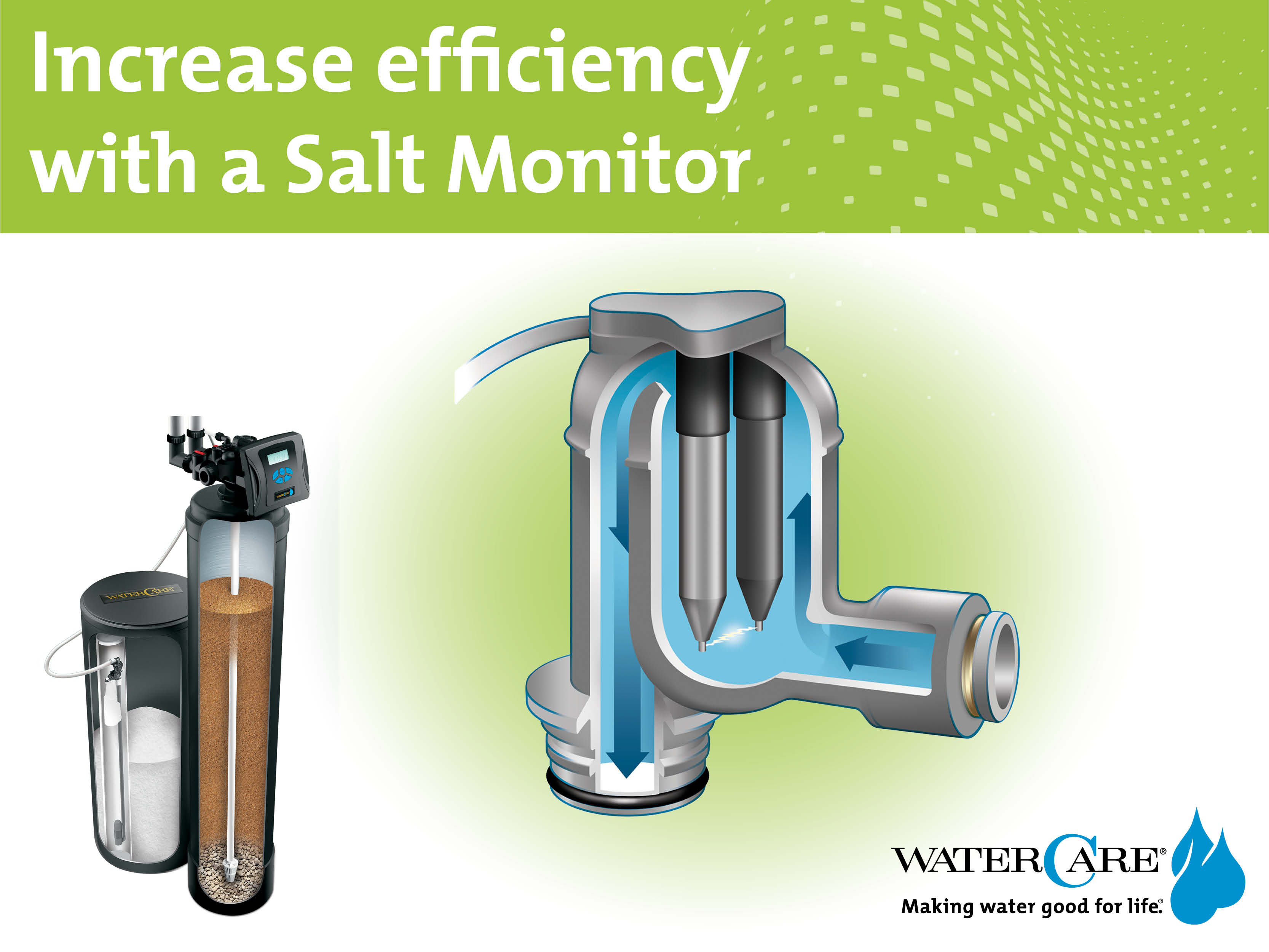Why you get spotting when you have a water softener. . . .

WHY YOU CAN STILL GET SPOTTING WITH A WATER SOFTENER
They’ve got a water softener to help remove the minerals that cause soap scum, scale buildup, and other hard water problems, but they’re still seeing spotting on things like their dishes, faucets, and after washing the car.
So what’s going on? Shouldn’t a water softener keep that from happening?
There are few reason why you may still get spots on surfaces even with a water softener installed.
Your Water Softener Needs Maintenance
The first question you should ask is whether your in-home water treatment system is functioning properly. If it’s not, your water won’t be the quality you expect and spotting could easily occur.

Do you need to add water softener salt? If your brine tank is less than half full, that could be the problem.
Select water softeners from Water-Right can take advantage of our patented salt monitors, which alert you when salt is needed.
You could also have a salt bridge or salt dome. This happens when a hard layer forms on top of the salt pile in the brine take. This layer is supported by the edges of the tank, creating a gap that prevents the salt from dissolving in the water.
You may be able to break up the crusted layer yourself using something like a broom handle.
“Salt mushing” is what happens when dissolved salt recrystallizes and forms a mushy sediment at the bottom of the brine tank. Salt mushing may keep your water softener from properly regenerating. The best way to fix this problem is to completely drain the system of water and replace the salt.
Yet another maintenance issue you may run into is the need to clean your resin beads. Even though a water softener’s regeneration cycle recharges the media, it’s still necessary to flush the resin bed every so often.
Are you sure your system settings are correct for your usage? That can also affect the performance of the system and quality of your water.
If you have questions about your water softener’s settings or any of the maintenance concerns mentioned above, contact your local WaterCare or Evolve water treatment dealer. You’ll find our experts are happy to help service your system.
You Still Have High Total Dissolved Solids
Water softeners are designed to reduce the amount of hard minerals in your home’s water. However, water softeners do not reduce total dissolved solids (TDS).
TDS is the measure of all matter that is dissolved in the water – inorganic and organic. Water softeners remove things like calcium, magnesium, and iron, but there could easily be other dissolved solids in the water that are leaving behind some sort of film or residue when the water evaporates.
Water is an incredible solvent, and it will dissolve practically anything given enough time. That’s why the TDS in water can include anything from minerals, metals, and salts to organic material from the soil or agricultural runoff.
A TDS meter measures the conductivity of water from positively and negatively charged ions in the water. Many Evolve and WaterCare dealers provide a free in-home water consultation and analysis, during which a technician will measure your water’s TDS.
You’re Seeing Spots from Sodium in Soft Water
You may be wondering why a water softener can’t reduce TDS when it is removing minerals like calcium and magnesium.
That’s because water softeners use an ion exchange process to replace hard minerals with sodium ions.
Since sodium ions are being exchanged for calcium and magnesium ions, the TDS of your water isn’t directly affected. For every sodium ion taken out, a sodium ion is put in. The higher the mineral content in your water, the more sodium is exchanged to soften it. The sodium content of softened water completely depends on how hard it was to begin with.
Softened water is certainly better for cleaning and bathing, and will extend the life of appliances like your washing machine and water heater. However, the spotting you notice from soft water may actually be sodium spots.
When water evaporates from your clean dishes or after washing your car, a powdery sodium residue could be left behind.
The good news is, sodium spotting can be very easily wiped off with a towel. The same cannot be said for soap scum and limescale spotting. You can also avoid sodium spots by thoroughly hand drying your car or dishes instead of letting them air dry.
How a Whole Home R.O. System Can Help
In many cases, homeowners will use a reverse osmosis (R.O.) system for drinking water and cooking. There’s typically a special faucet where the filtered water is dispensed.
Yet there are others who want R.O. quality water throughout their entire home, even from outdoor faucets.
That’s because reverse osmosis systems are the best way to remove total dissolved solids, including contaminants that negatively impact water quality.
You’ve probably noticed how car washes often advertise a “spot-free rinse.” They’re actually using reverse osmosis water to give you that perfectly clean, shiny-looking car during the rinse cycle.
A whole house R.O. system can let you have that same sort of spot-free rinse for your cars as well as dishes and more!
Contact a water-treatment expert near you with your questions today …
All Water-Right dealers are equipped to help you with your water needs.
Reprinted from the Water-Right Group blog post.

